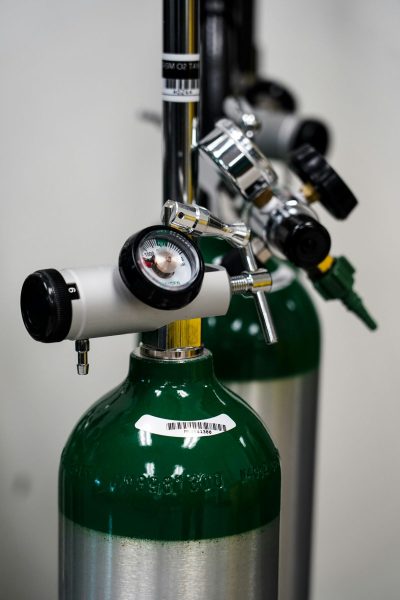
Transporting gas cylinders is a critical operation that requires careful attention to safety protocols and regulations. Whether you’re moving oxygen tanks or other compressed gases, proper handling and transportation are essential to prevent accidents and ensure compliance with legal requirements. This comprehensive guide will walk you through the best practices for safely transporting gas cylinders, with a focus on DOT regulations and industry standards.
Understanding DOT Regulations for Transporting Compressed Gas Cylinders
The Department of Transportation (DOT) has established strict guidelines for the transportation of compressed gas cylinders. These regulations are designed to minimize risks associated with the movement of potentially hazardous materials.
Key DOT Regulations for Oxygen Tanks and Other Compressed Gases
- Proper labeling and marking of cylinders
- Securing cylinders during transport
- Vehicle requirements for transporting compressed gases
- Training requirements for personnel involved in transportation
Choosing the Right Equipment for Gas Cylinder Transport
Selecting appropriate equipment is crucial for the safe transport of gas cylinders. Gas cylinders should be moved using specialized tools and vehicles designed for this purpose.
Essential Tools for Transporting Oxygen Tanks and Other Cylinders
- Gas cylinder carts: Designed for easy maneuverability and secure transport
- Cylinder restraints: Prevent cylinders from tipping or rolling during transit
- Protective valve caps: Shield valves from damage and prevent accidental release
Best Practices: How Gas Cylinders Should Be Moved
Adhering to best practices when moving gas cylinders can significantly reduce the risk of accidents and ensure compliance with regulations.
Safe Handling Techniques for Gas Cylinder Transport
- Always keep cylinders upright during transport
- Use appropriate personal protective equipment (PPE)
- Never drag or roll cylinders on their sides
- Utilize mechanical lifting devices for heavy cylinders
Preparing to Transport Bottle of Compressed Gas
Proper preparation is key to ensuring the safe transport of compressed gas bottles. This includes both the cylinders themselves and the vehicle used for transportation.
Pre-Transport Checklist
- Inspect cylinders for damage or leaks
- Ensure all valves are closed and protective caps are in place
- Verify that cylinders are properly labeled and marked
- Check that the transport vehicle meets DOT requirements
Vehicle Requirements for Transporting Compressed Gas Cylinders
Vehicles used to transport compressed gas cylinders must meet specific criteria to ensure safety and compliance with regulations.
Key Vehicle Features for Safe Gas Cylinder Transport
- Proper ventilation to prevent gas accumulation
- Secure attachment points for cylinder restraints
- Separation of incompatible gases
- Fire extinguishers and other safety equipment
Training Requirements for Safe Gas Cylinder Transportation
Proper training is essential for anyone involved in the transport of compressed gas cylinders. This ensures that all personnel are aware of potential hazards and know how to handle emergency situations.
Important Training Topics
- Identification of different gas types and their properties
- Proper handling and lifting techniques
- Emergency response procedures
- DOT regulations and compliance requirements
Special Considerations for Transporting Oxygen Tanks
Oxygen tanks require extra precautions due to their ability to accelerate combustion.
Oxygen-Specific Transport Guidelines
- Keep oxygen tanks away from flammable materials
- Ensure excellent ventilation in the transport vehicle
- Use oxygen-clean equipment for handling
- Be aware of increased fire risk in the presence of oxygen
Maintaining Safety During Long-Distance Transport
When transporting gas cylinders over long distances, additional precautions are necessary to ensure safety throughout the journey.
Long-Distance Transport Tips
- Plan route to avoid populated areas when possible
- Schedule regular stops for cylinder and vehicle inspections
- Be aware of changes in temperature and pressure during transit
- Carry appropriate documentation for interstate transport
Handling Emergency Situations During Gas Cylinder Transport
Despite best efforts, emergencies can occur. Being prepared to handle these situations is crucial for minimizing risk and potential damage.
Emergency Response Guidelines
- Immediately stop the vehicle in a safe location
- Assess the situation and identify any leaks or damage
- Contact emergency services if necessary
- Follow specific emergency procedures for the type of gas involved
Conclusion: Prioritizing Safety in Gas Cylinder Transportation
Transporting gas cylinders safely requires a combination of proper equipment, thorough knowledge of regulations, and adherence to best practices. By following the guidelines outlined in this article, you can significantly reduce the risks associated with moving compressed gases and ensure compliance with DOT regulations.
Remember, safety should always be the top priority when transporting oxygen tanks or any other compressed gas cylinders. Regular training, proper equipment maintenance, and strict adherence to protocols are essential for protecting your personnel, your cargo, and the public during gas cylinder transport operations.
For more information on gas cylinder carts and other transport solutions, visit Anthony Carts. Our range of specialized equipment is designed to make the transportation of gas cylinders safer and more efficient for businesses of all sizes.

